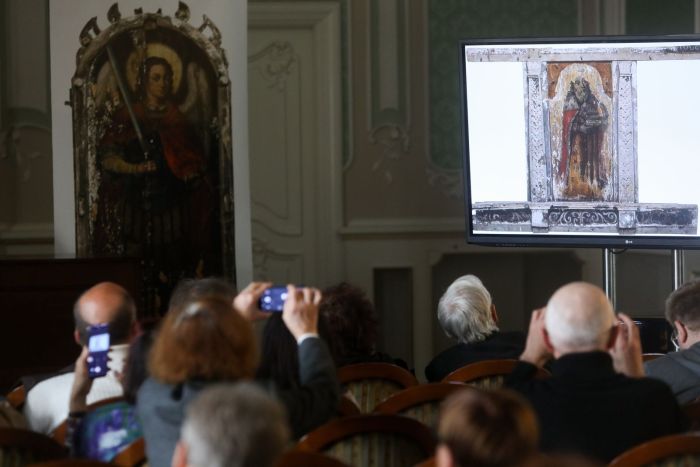Estimated reading time: 2 minutes
In a groundbreaking archaeological find, researchers from the Institute of Art at the Polish Academy of Sciences (IS PAN) have uncovered substantial fragments of a 17th-century iconostasis in the attic of St. John the Theologian Church in Nowoberezowo, Podlaskie, Poland. This discovery is hailed as the oldest of its kind in the region and stands out for its authenticity and impressive state of preservation.
Unearthing History:
Dated to the 17th century, the discovery comprises 17 fragments, each varying in their state of preservation. Presented during a recent exhibition in Białystok, this historic find sheds light on a pivotal period in the region’s cultural heritage.

The Uniqueness of the Iconostasis:
These fragments offer invaluable insights into an intricate and complex structure featuring multiple icons. Some of the icons are in remarkable condition, while others have suffered severe damage. However, even in its fragmented state, this iconostasis allows for a near-complete reconstruction, revealing a structure spanning eight meters in width.
Unparalleled Significance:
The researchers express confidence in the uniqueness of their discovery, emphasizing its cultural, historical, and regional significance. Unlike renowned artworks, this iconostasis comes to us unmediated by any conservation efforts, making it a true rarity.
A Historical Rarity:
It is noteworthy that this 17th-century iconostasis is considered the oldest of its kind in the region. Most similar objects from the 17th and 18th centuries within the Russian Empire were either destroyed in the 19th century or have succumbed to time’s passage. Researchers find few analogies to this remarkable find.
Preserving the Legacy:
Due to the extraordinary importance of this discovery, preliminary research findings have been published in the latest edition of the Art History Bulletin.
